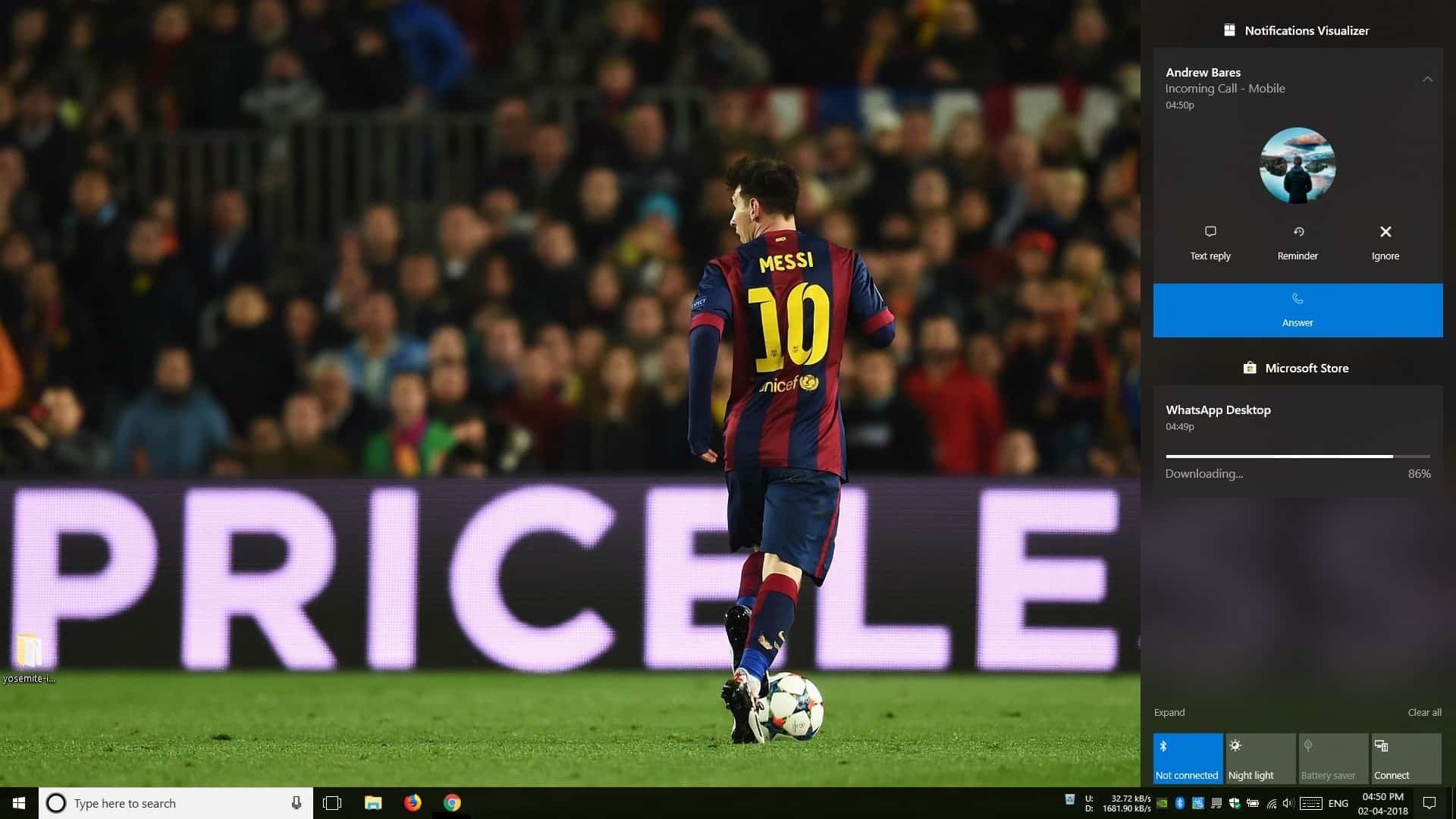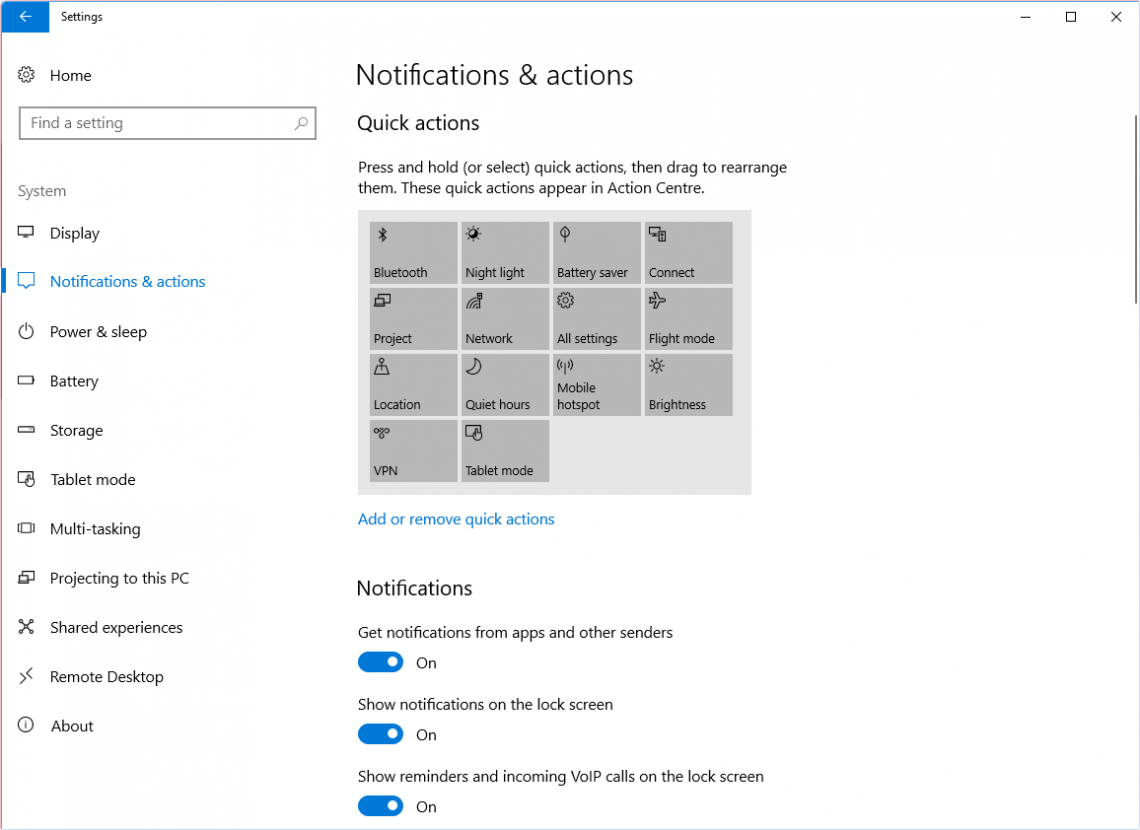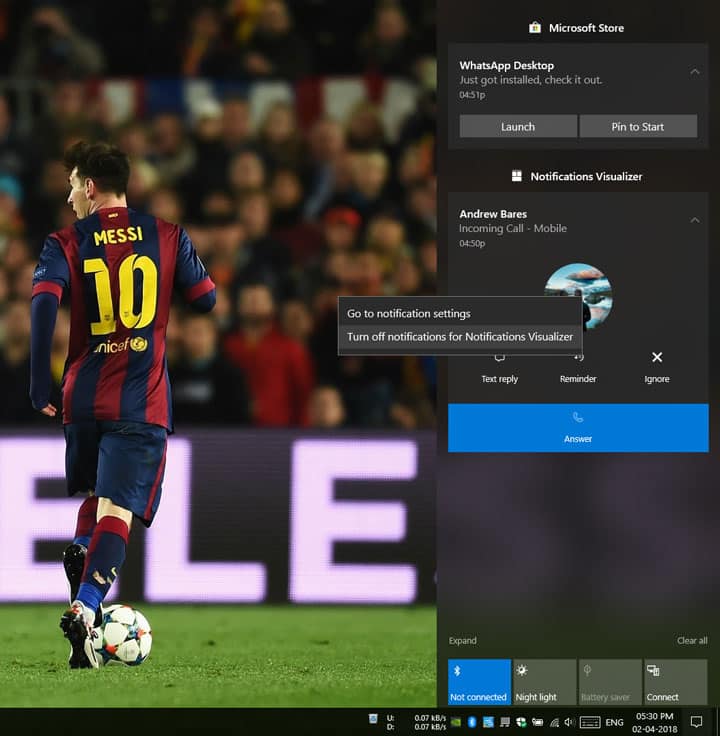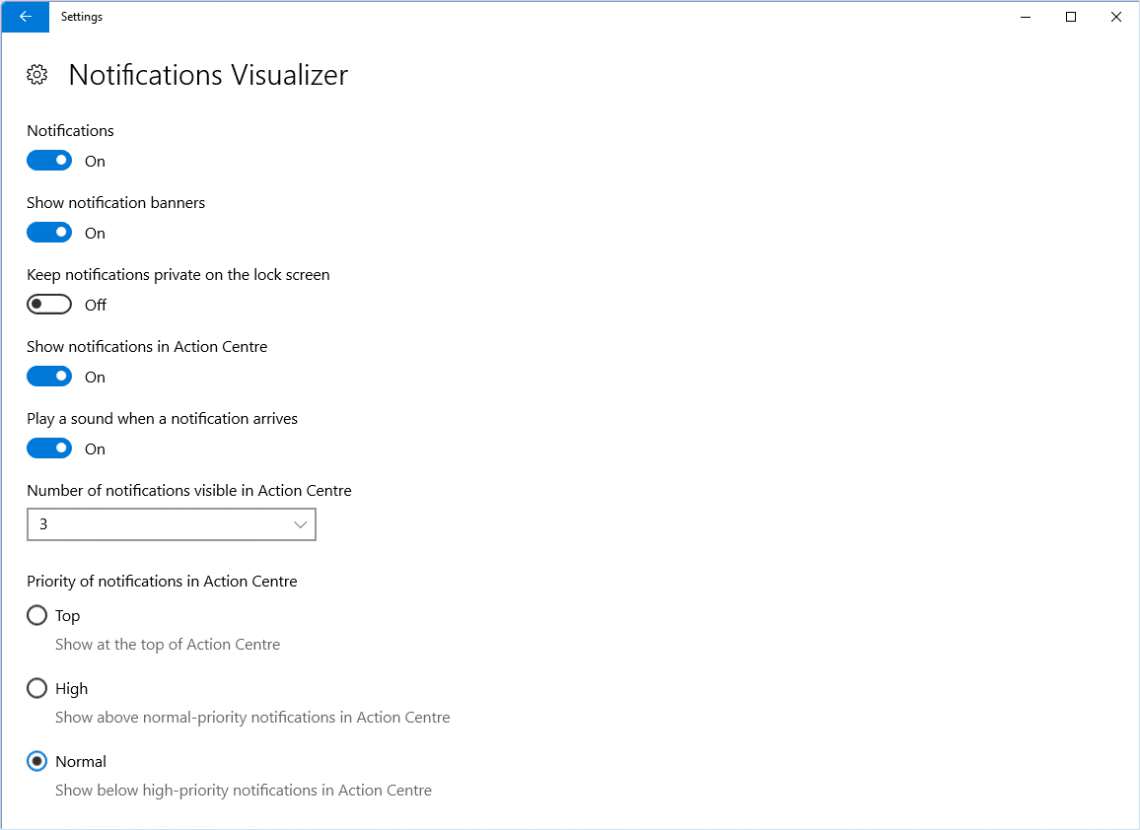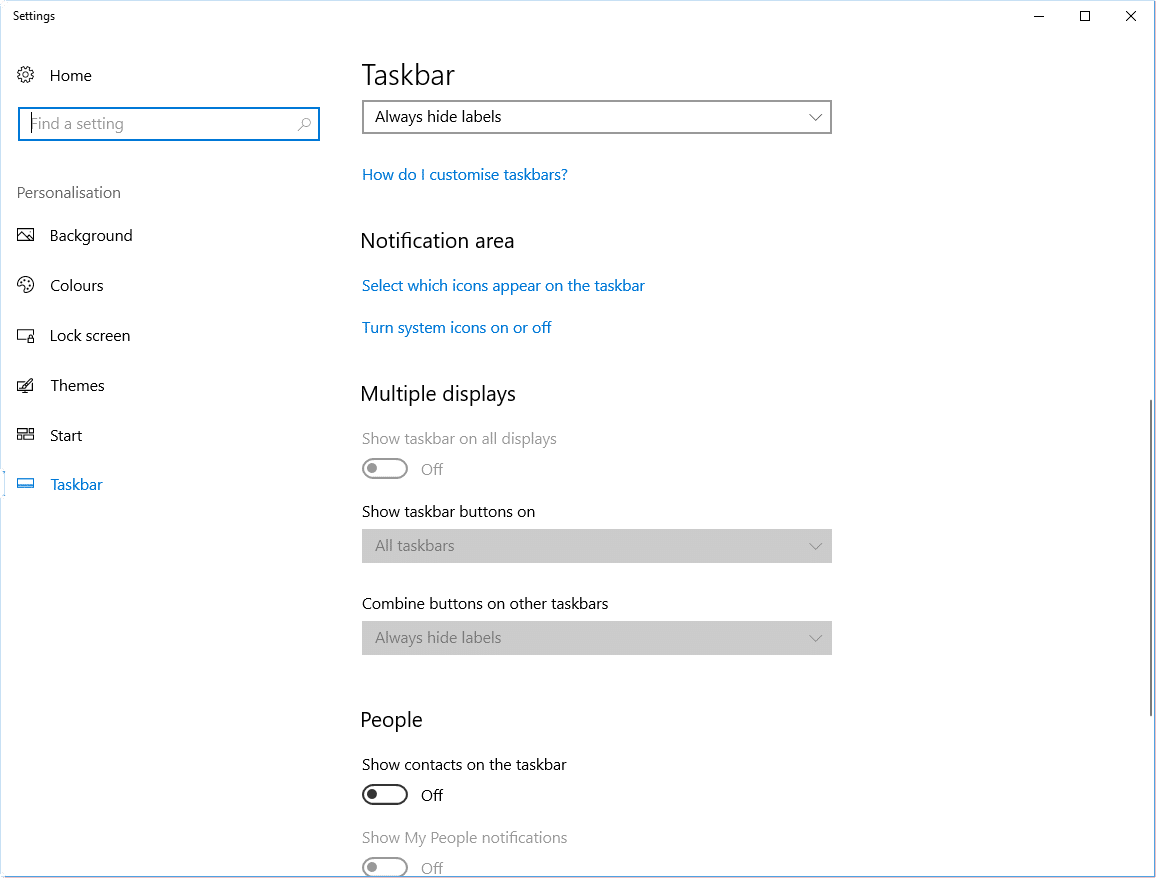Notifications have been a part of the Windows OS way before any mobile OS currently ruling the markets was even present. These notifications were usually system notifications though delivered via the Action Center. Not many, if any, third-party apps sent users notifications. This guide will discuss the method to customize the Action Center on Windows 10.
Microsoft has taken a more mobile approach to the desktop OS with Windows 10. With dedicated apps for online services like Facebook and Twitter and even other store apps sending you notifications to get your attention, just like on mobile, it becomes necessary to manage those notifications. While not as robust as the notification management on Android, Windows 10 provides you with a few options to customize the Action Center on Windows 10. We’ll also check out how to customize the Notification area on the taskbar and manage notifications from installed apps.
Customize Action Center on Windows 10
In the screenshot above, you can see the typical notification center in Windows 10. You have the notifications stacked one above the other and some quick toggles at the bottom. Usually, there are only four toggles, but you can click on Expand to view all the other quick toggles.
You can change the order of the quick toggles so that the most used ones are on the top or hide some of them. You can do this in Settings > System > Notifications & actions. Before we get to the quick toggles, scroll down below and you can change a few global notification settings. For instance, whether they should appear on the lock screen, whether you want to receive notifications from third-party apps, see reminders and incoming VoIP calls on the lockscreen, etc.
If you prefer, you can toggle off the Windows welcome experience here which shows you a quick look at the new features after a major update. If you’re annoyed by Windows 10 suggesting you use Cortana, Edge, or other Microsoft products, you may also want to turn off Get tips, tricks and suggestions as you use Windows. Click Add or remove quick actions and you can toggle (pun intended) the quick toggles. If you’re concerned about privacy, you may also want to toggle on Hide notifications when I’m duplicating my screen.
Customize notifications from individual apps
An upcoming Windows 10 update will expand the control users have on app permissions. Meanwhile, it does provide users with options to control notifications from different apps. You can manage this from the centralized Settings app or individually from the Action Center notifications. Say, you want to hide notifications from a specific app, right-click on its notification in the Action Center and click either Turn off notifications from AppName app or Go to notification settings for the app. Alternatively, you can go to Settings > System > Notifications & actions and click on the App that you want to access notification settings.
Here, you can keep the notifications on and only turn off the notification banners. You can hide or show notifications from this specific app on the lockscreen, and action center, enable or disable the notification sound, or set a priority.
Having customized the Action Center, let’s see how we can customize the Notifications area on the Windows 10 taskbar.
Customize Notifications Area on Win 10
The system tray is on the right side of the taskbar where you see the system icons and a notifications area. At least, until every third-party app starts using the Windows 10 notifications system. Some third-party apps still use their notification service, for example, Nvidia GeForce Experience. These services usually display a system tray icon alongside the other system icons. Too many icons there can get annoying or cluttered, or maybe you would like too many icons because you have a wide screen.
Windows lets you change how many icons, and which icons are displayed in the system tray. Right-click on the taskbar and select Taskbar Settings. Scroll down and click the links that say Select which icons appear on the taskbar and Turn system icons on or off. You can turn all third-party or system icons on or off these two pages. You can pin your favorite websites to the taskbar using Chrome, Firefox, and Microsoft Edge browsers.
![]()
Here are some more tips and tricks to customize the taskbar on your Windows 10 PC.
